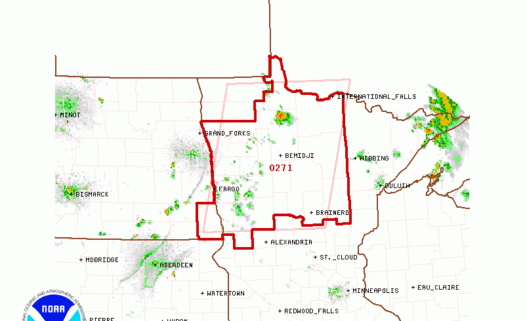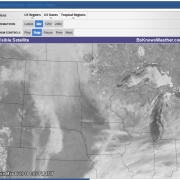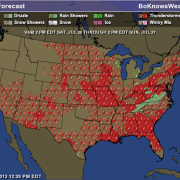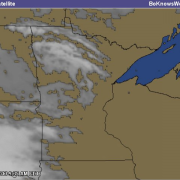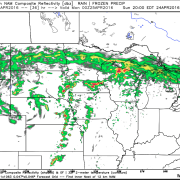Update on Snowfall Potential for January 11th & 12th
Hey everyone- trying to avoid the hype here- and I know all of you are as frustrated as I am about none of these systems really panning out. After all- what is winter for in MN if we don’t have snow? I agree– very frustrating.
So- we saw this storm coming before it was even on shore- and now that it is- some things are coming into play more.
There’s a few technical things to consider, and when considering them, we have to look at model runs- which even right now, still have variables. So- with all of these complex factors in mind- snowfall forecasting ends up being very challenging, as each one of these variables evolves with each model run, and then there’s the realtime conditions when the storm actually moves in!
1. Upward Vertical Velocity (UVV)- this can be a factor when it comes to creating enough lift to help advect the moisture into the system and cause it to condense into precipitation. A lot of this is influences by fronts, circulation/proximity to and around a low, and whether or not your location is near the entrance region or exit region of a jet streak. A Jet steak is an area of higher than normal windspeeds within the jet stream- basically a wind speed maximum.
2. Cold Air Advection- Sometimes the cold air can advect into a system so quickly and dry things out, and also suppress the UVV mentioned above.
3. The UVV can migrate downstream in the storm, just as the cold temps are moving in to support snow.
4. Big storms that originate from the Southwest, like this one, are notorious for wrapping in dry air. It doesn’t look to be as much of a factor on this one, however.
5. Warm temps- in this case- lacking snow pack and a warm air mass out ahead of the system might be just enough of a factor to cause some of the onset precip to be freezing rain/mix- especially on the SE side of the storm- closest to where the heaviest snows are anticipated.
6. As the main low still is in the central plains, some early snowfall may develop in the Dakota’s and Northern MN. It isn’t until later on in the evening and overnight into Thursday that the low will be closer and bring a secondary wave of precip- the LIKELY heavier band, into play, which may have mixed precip- and a very narrow corridor of heavy snow. Even a shift of 30-50 miles in storm track, which we really won’t know until the day of, and when it is actually happening, will be the difference between some people getting 1″ and some getting several inches. Here is the current thinking for track– and usually the position just NW of the main low track by about 100-300km is the best place to be.

7. Heaviest snow usually falls where temps are anywhere from -2 Celcius to -6 Celcius at the 850mb level in the atmosphere. And you also need Relative Humidity near 90% between 1000MB and 500MB levels in the atmosphere. The higher dewpoints in the warm sector of this system may help to bring some moisture into the system as well.
There are so many more things to consider, but those are the basics. In this case- the band is likely going to be narrow based on all of these factors coming into play. The larger dome of snow on radar will likely be further up North, along with the other consistent band that kicks the system off. Our Southern band- the one that seems to be causing the most back and forth confusion, will be the biggest area of ‘wonder’ for all of us.
Stay tuned- and be nice to the weather guys- we are doing our best- and we don’t like it anymore than you do when thing hit the fan on a forecast. The forecast will likely be changing right up until the day of. It is just one of those types of systems.
Here’s my current forecast- and I will try to update it while away for work in CA- but please be sure to pay attention to local watches and warnings from the National Weather Service. Posted at 2:40AM CT Wednesday.

Also stay tuned for announcements on my new site- coming soon! My app is currently down, but I expect it back up this week- thanks for being patient.
Don’t forget to follow @BoKnowsWeather on Twitter and Instagram, and @BoKnowsWXAlerts
-Meteorologist Bohdan Cole

